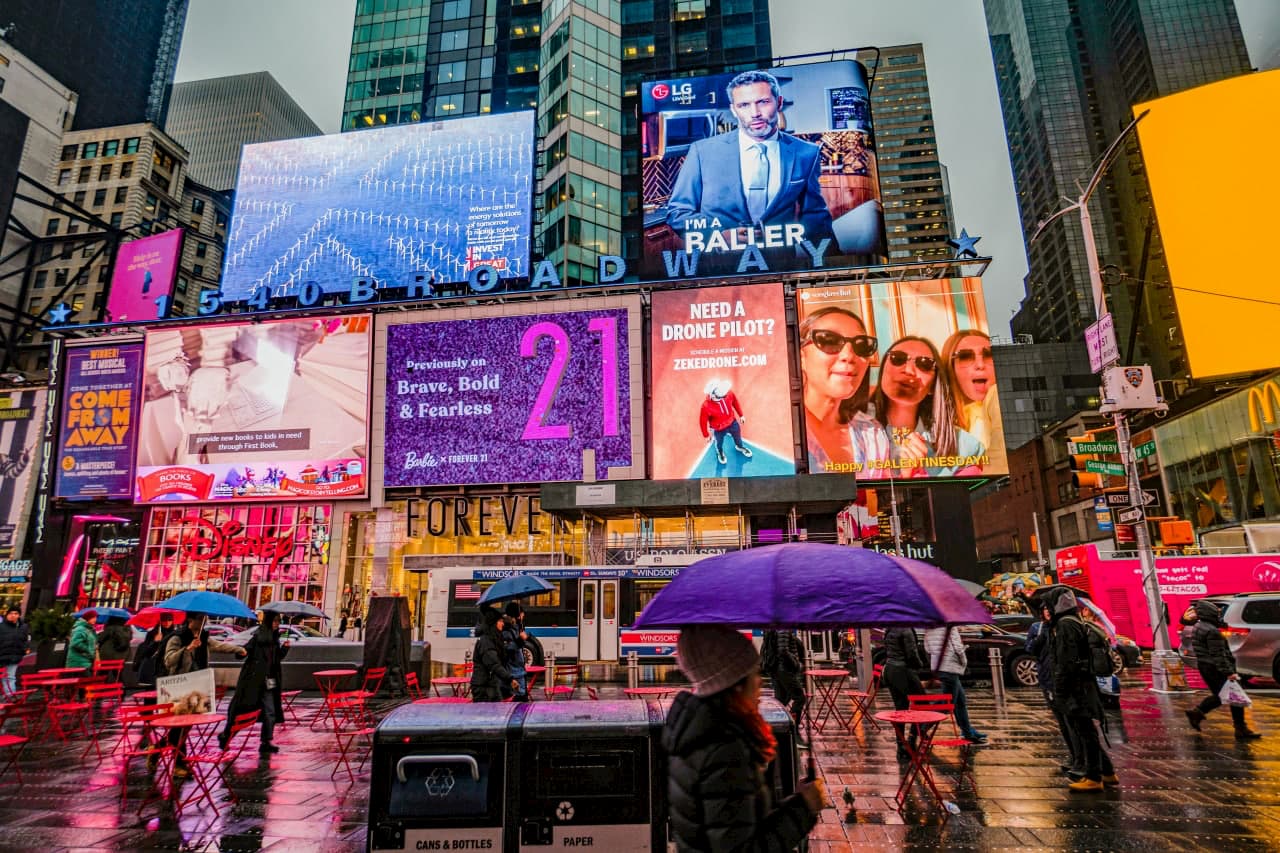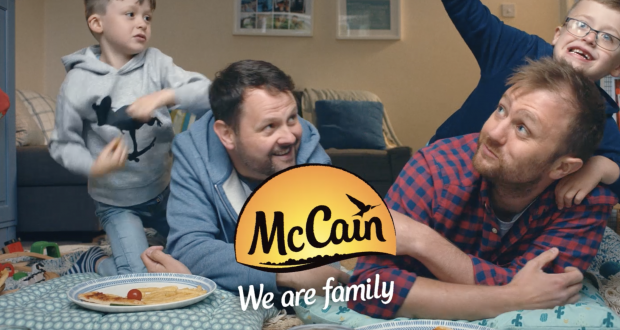
Burkett Outdoor Advertising has been in operation for more than 30 years. It is headquartered in Amarillo, Texas and serves the cities of San Antonio, TX and Austin, TX. Beau Burkett and Randy Burkett are the owners of the company.
Bill Salter Outdoor Advertising
Local business owner filed a complaint last month alleging that Burkett Outdoor Advertising's digital billboards were in violation of state ethics laws. This includes those related to the purchase and sale of advertising space. Jim Persons, who is in favor of the downtown baseball park project, filed the complaint.

According to the business owner, the signs are in violation of state law as they don't include a TEC notice or disclose that Tim Benson bought the ad spaces. The business owner also says that the ads do not clearly state that they are paid for by the campaign.
TEC Rejects a Businessowner's Complaint
The complaint by Persons, who owns an insurance agency, was filed on Oct. 12 and was rejected by the TEC. In a statement, the commission claimed that the complaint was based in technical errors.
The TEC cited simple errors in the ads' information in its rejection letters. It stated that the information on the ads stating Benson purchased the ad spaces was impossible to read, and that it did not include a TEC Right-of-Way statement as required by law.
Whether or not these errors are serious is up for debate. The TEC did no respond to reporter inquiries on Wednesday.

Unconstitutional is the City's Sign Ordinance
In this case, the legal issue is whether Salter must obtain permits to install advertising signs off-premises. Salter challenges the City’s municipal code ("Ordinance") which governs the location of outdoor advertising signs and their setbacks, heights, frequency and other regulations. The court must determine whether the Ordinance as it stands and how it was applied. The court must decide if the Ordinance discriminates against commercial or noncommercial advertisements.
FAQ
Advertising: What is it?
Advertising is an art form. Advertising is more than selling products. It's about creating emotional connections between people and brands.
Advertising is about sharing stories and using images for ideas.
You must communicate clearly and persuasively. And you need to tell a story that resonates with your target market.
This makes advertising different from other forms of communication, such as public speaking, writing, or presentations.
Because when you create a successful ad campaign, you are creating a brand identity for yourself.
This is how you make yourself memorable. You will be remembered by others.
What is advertising's basic purpose?
Advertising isn’t about selling products.
Advertising is about communicating ideas and values to people who are already interested in what you have to offer. Advertising is about changing people's minds and attitudes. It's all about building relationships.
It is all about making people feel good.
You can't sell to your customers if you don’t know their needs.
So before you start any advertising project, you should first understand your customer's needs and wants, and buying habits.
You can then design ads that resonate with them.
What information do you need about internet advertising
Internet advertising is an integral part of any business strategy. It helps companies reach potential customers at a low cost. There are many types of internet advertising. Some are free, while others require payment.
There are many ways to advertise online, including pop-up ads and banner ads. Each method comes with its own set of advantages and disadvantages.
What are the basics of print advertising?
Print advertising is a great medium to communicate with customers. It is used by many companies for promoting products and services. The goal is to get the consumer's attention.
Print ads are usually one page in length and can include text, images and logos. You may also find sound, animation, video and hyperlinks.
The following are the main types print advertisements:
1. Brochures – These are large format printed pieces that are intended to draw people into stores. Brochures often feature eye-catching designs and colorful photos.
2. Catalogues - These are smaller versions of brochures. These are usually sent to customers who request information about specific items.
3. Flyers - These are small pieces of paper distributed at events such as concerts and fairs. They can be given at retail outlets but must be paid for.
4. Posters – These are larger versions for flyers. They can be displayed on fences, walls, or buildings. They are created by computer software programs in order to grab passersby's eyes.
5. Direct mail - This refers to letters or postcards mailed directly to potential customers. These are sent to customers periodically by businesses to remind them about their business.
6. Newspaper Ads - These are placed in newspapers and magazines. They can be quite lengthy and often include text as well as images.
What are your thoughts on television advertising?
Television advertising is a very effective medium to reach many people at once. It was also very expensive. But if you use it correctly, it can be extremely powerful.
While there are many types and styles of TV ads, most share some common traits. It is important to make sure that your TV ad fits into the appropriate category. It is not a good idea to try and run a lifestyle TV commercial while running a product or service commercial. Your message should remain consistent throughout the campaign.
The second thing to remember is that the best time to air your ads is during prime-time hours. This is because TV viewers often relax while in front of the screen. They should be able to concentrate on what you are saying.
You don't have to be rich to achieve great results. However, this may not be true. According to a University of California study, commercials that aired on popular TV shows had lower sales than those that aired on unpopular programs. It is important to do the right thing if your TV advertising budget is large.
How can you choose your target audience?
Start with yourself, and the people closest to you. Do you not know where to start? Ask yourself "Whom do I want to reach?"
Ask yourself these questions: Who are the most influential people in my industry? What problems do they deal with daily? Who are the smartest people in my industry? Where do they hang out online?
Go back to the beginning when you started your business. What motivated you to start your business? What was your problem and how did it solve?
These questions will enable you to identify your ideal client. These answers will help you understand your ideal clients and what motivates them to buy from you.
For clues on who your competitors cater to, check out their websites and social media pages.
Once you have identified your target customer, you need to decide the best channel to reach them. A website might be created to reach home buyers, for instance, if your business provides services to agents in real estate.
If you provide software to small businesses, you could develop a blog targeting those companies' owners.
You could also create a Facebook account for teens if you sell clothing. Or if you're a restaurant owner, you could set up a Twitter account for parents looking for kid-friendly places to eat.
The important thing is that you have many options for getting your message across.
How much does it take to advertise on social networks?
It is important to know that advertising on social media platforms is not free if you decide to do this route. You will be charged monthly depending on your time on each platform.
Facebook: $0.10 per 1,000 impressions
Twitter - $0.20 per 1,000 impressions (if you tweet)
Linkedin - $0.30 per 1,000 impressions if you send out invitations
Instagram - $0.50 Per 1,000 Impressions
Snapchat - $0.60 for 1,000 impressions ($0.40 Per User)
YouTube – $0.25 per 1000 views
Tumblr: $0.15 per 1,000 impressions of text posts
Pinterest - $0.05 per 1,000 impressions per month
Google+ - $0.15 to $0.0.20 per 1,000,000 impressions
Tumblr $0.15- $0.20 for 100,000 impressions
Vimeo - $0.20- $0.25 per 10,000 impressions
Soundcloud - $0.20 to $0.0.25 per 1 Million Plays
StumbleUpon - $0.20 -$0.25 per 1 billion pageviews
Digg - $0.20 - $0.25 per 1000 diggs
Reddit: $0.20-$0.25 for 1000 comments
Wordpress $0.20-$0.25 per 500 Comments
Flickr - $0.20 -- $0.25 per 5,000 photo uploads
Statistics
- Nonetheless, advertising spending as a share of GDP was slightly lower – about 2.4 percent. (en.wikipedia.org)
- Worldwide spending on advertising in 2015 amounted to an estimated US$529.43 billion. (en.wikipedia.org)
- This means that at least 50% of an ad needs to be shown on the screen for at least one second. (quicksprout.com)
- It collects money from the advertisers, keeps 32% for its role in facilitating the process, and the remaining 68% goes to the publisher (you). (quicksprout.com)
External Links
How To
How do I place my advertisement on a billboard
Although billboards have been around since late 1800s, they first became popular in World War II as they were placed along highways and roadsides. Most billboards are text-based advertising. Some also include photographs or artwork. Although most billboards remain static, some display messages that change frequently, such as weather forecasts and stock prices or news about political events.
The majority of billboards are outside displays. However, there are indoor versions. While outdoor billboards are often seen by people passing by, indoor ones might only be seen once in a few years. A cubic billboard, which is the most commonly seen type of outdoor billboard, is made up three layers. These include two sheets of glass sandwiched with a layer containing fiberglass mesh. This design allows air movement through the billboard. It is cool in hot weather, and warm when it's cold.
Billboard Advertising Inc. has many of North America's most prominent billboard advertising firms. Advertisers pay them to advertise on their billboards. These companies then make space available on billboards for advertisers. These billboards are purchased by advertisers according to how much they wish to spend on advertising. These advertisers often choose the best location for their ads depending on how many people they are likely to see.
Billboard Advertising Inc. sells advertising space. It also has agreements with local governments to place signs on public property. Some cities allow billboards in any area, while others have restrictions. Chicago, for instance, has a restriction that billboards cannot be more than 1,000 feet from any highway. Other cities require that billboards be placed no closer than 500 feet from a school or church.
Billboard Advertising Inc. holds contracts to promote products or services in the United States. This includes Florida, California and Nevada, Texas and Arizona, New Mexico and Colorado.